Recovery measures
Storyboard 
To proceed with recovering the water damage, it is first necessary to make adjustments to the design to allow for better drying of the structure. After drying, it is crucial to take measurements to ensure that there are no remaining moisture spots that could continue to damage the structure. Once it is confirmed that the drying process has been effective, the recovery process can begin.
ID:(122, 0)
Drying hard-to-reach areas
Description 
In the event of water ingress into the structure, a drying process is necessary to restore the structure. To achieve this, all areas must be accessible so that dry air can circulate effectively.
In this case, there was an area that would have remained closed off, so it was necessary to create an opening to allow for air circulation:
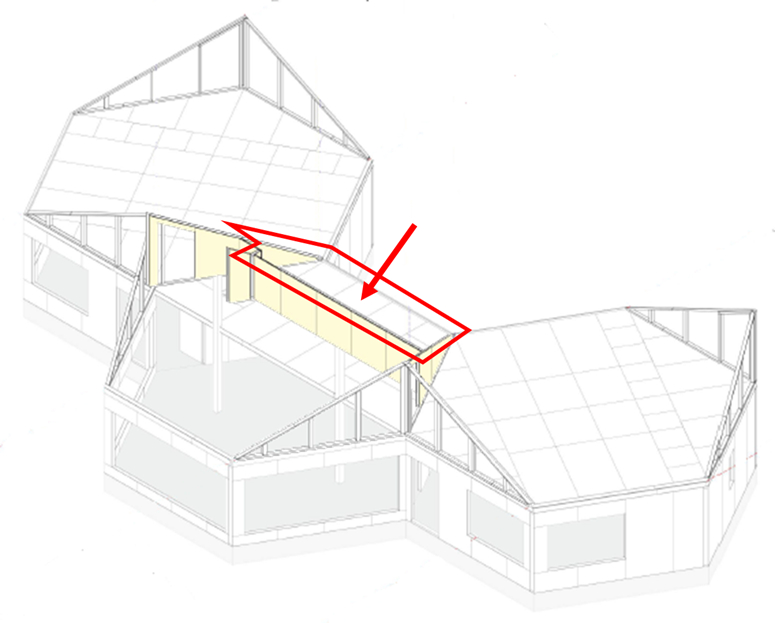
This access also allows for periodic inspections in the future to detect any water ingress once the house is occupied, enabling timely repairs to prevent further damage.
ID:(815, 0)
Opening of maintenance access
Description 
In the case of the enclosed space, it was determined that an opening can be made in the SIP panel U6 in the subfloor, measuring 50x60 cm. This will allow for both air circulation and future access if any maintenance is needed:
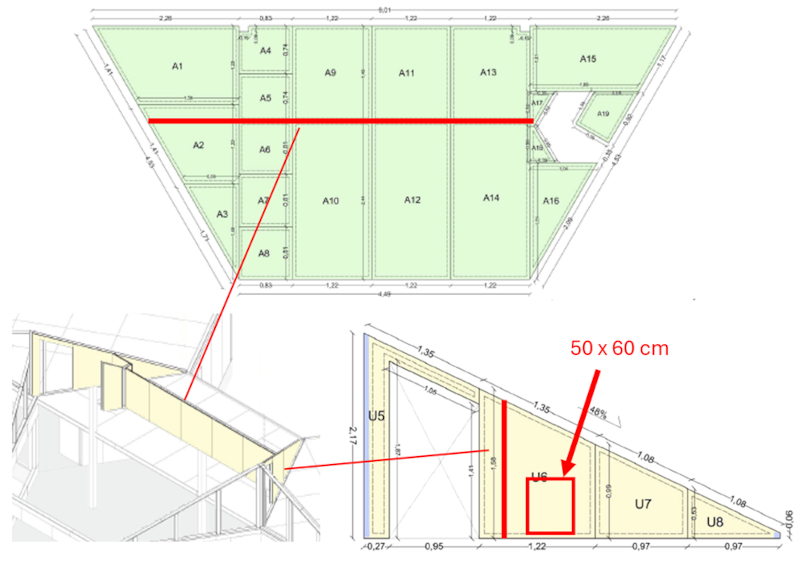
In the SIP panel U6, the opening will look as shown below:
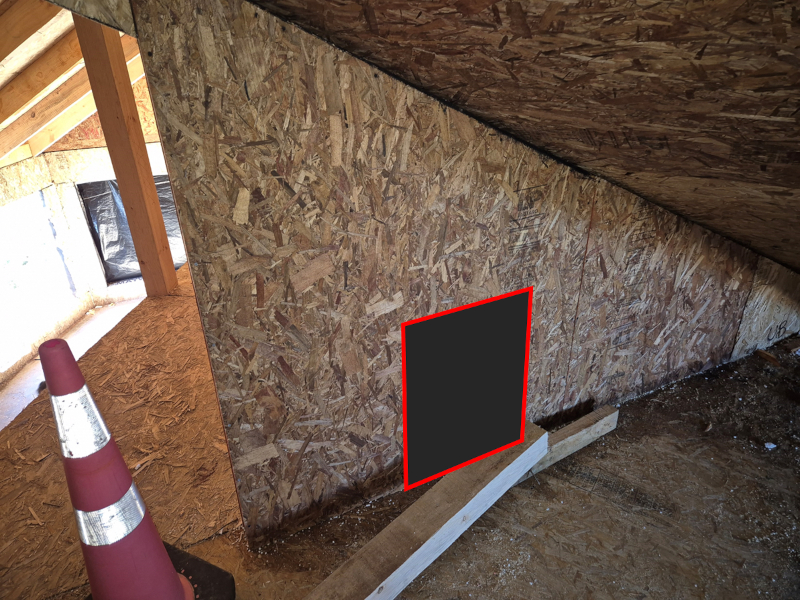
This opening is crucial for the drying process and for maintaining the space above the kitchen, which is currently closed.
Subsequently, the opening was made and it was found that the floor in this area is still saturated with water:
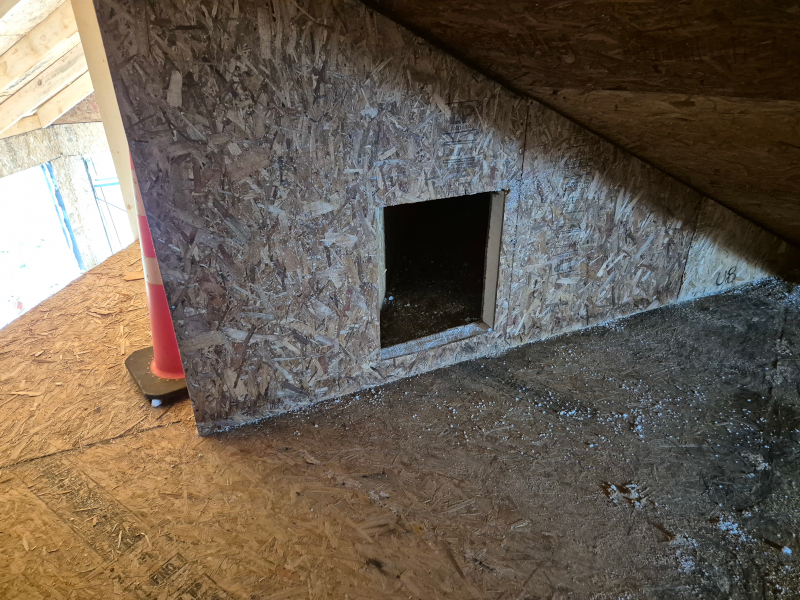
ID:(816, 0)
Most critical points: the mezzanine
Description 
The main damage to the SIPs occurs because the oriented strand board (OSB) absorbs water. This leads to swelling and a loss of load-bearing capacity. This is critical for all elements where these boards bear loads, especially horizontal elements such as the mezzanine. During the storms, water entered these areas, creating significant puddles. The water eventually flowed towards the slab, both outside and inside the walls, soaking the panels at their base.
Since the vertical walls do not bear loads through the OSB, it is important to dry these panels. Only in more extreme cases will it be necessary to replace or at least reinforce them. Therefore, the critical areas are the sections of the mezzanine that are soaked with water. These are numerous, as seen in the following images:
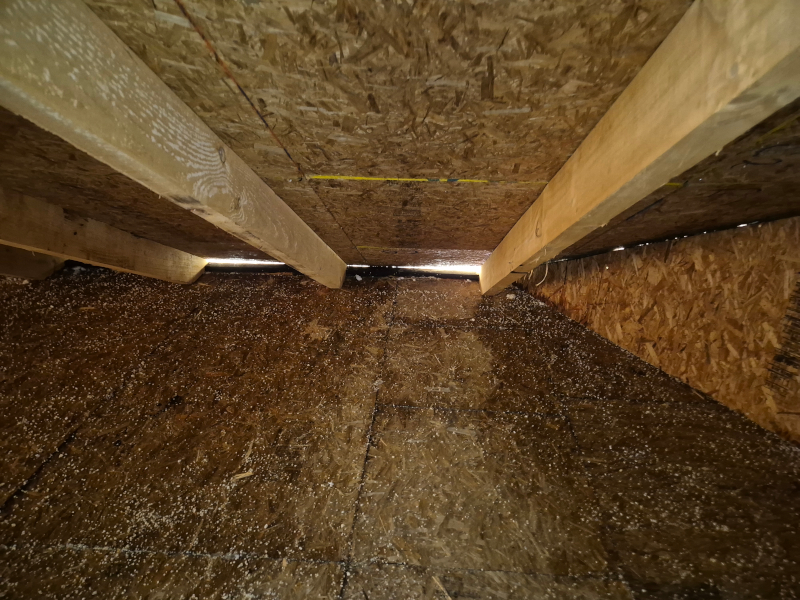
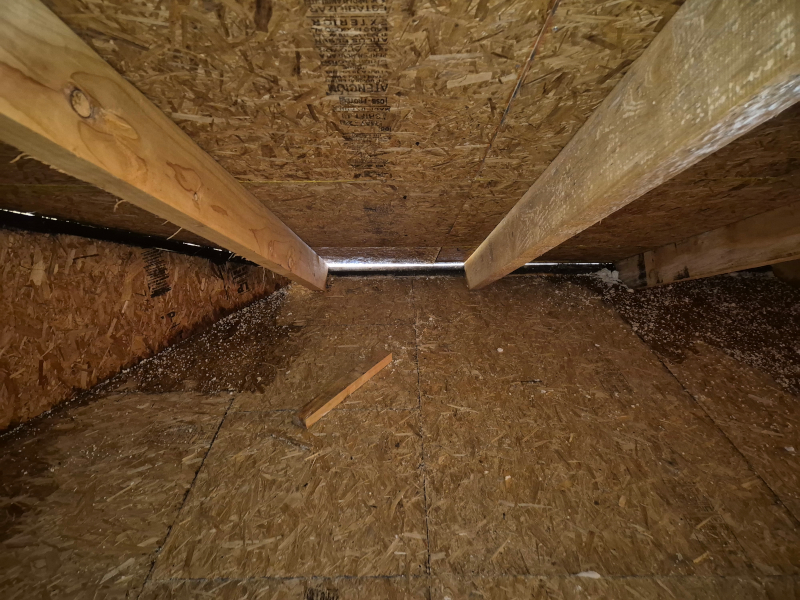
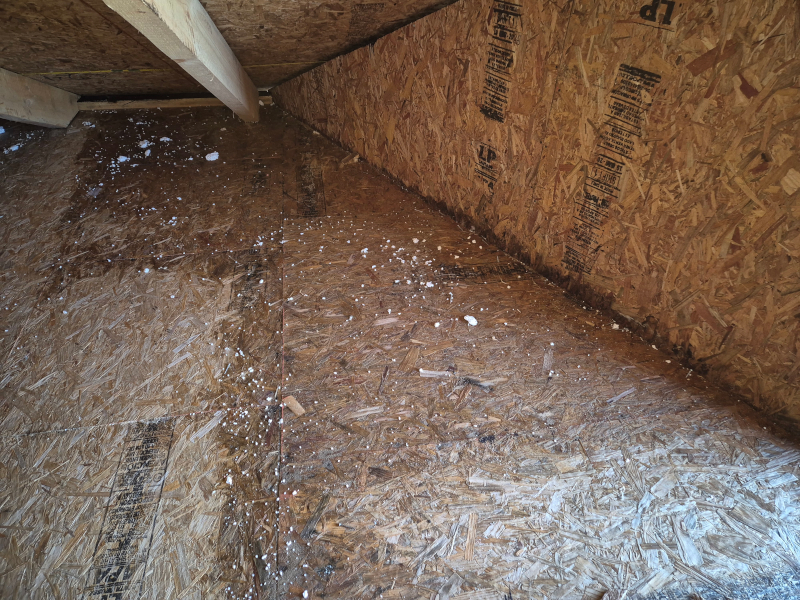
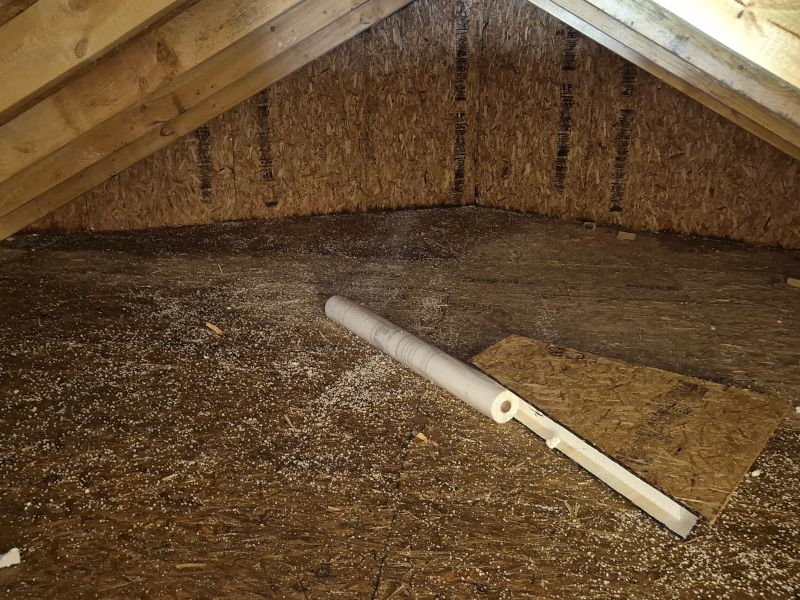
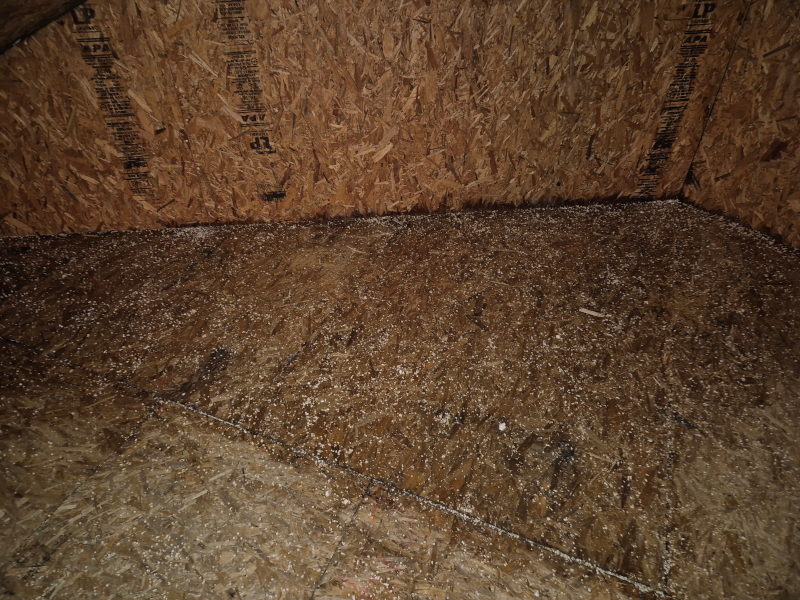
ID:(871, 0)
Do not remove supports
Description 
In the case of SIP panels, the pressed wood only bears load in the horizontal elements, forming a sandwich structure with the wood frame. Since these can flex, it is crucial to ensure that the damage has not compromised their integrity. Therefore, it is advisable not to remove the supports that were in place during assembly until it is confirmed that the panels have recovered and can bear the intended load:
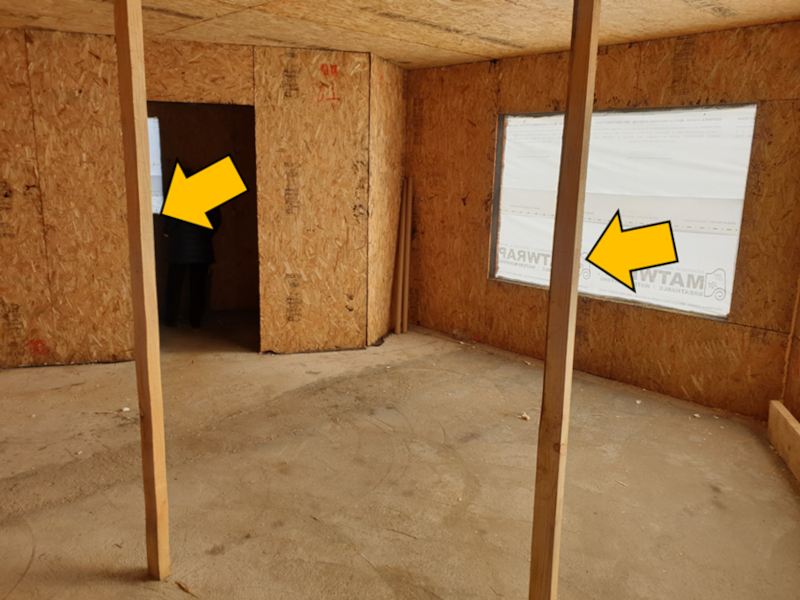
Therefore, in the event of damage:
Do not remove supports until you have ensured that the damage does not affect the supported structure or that the necessary repairs have been made to allow it to bear the load.
ID:(817, 0)
